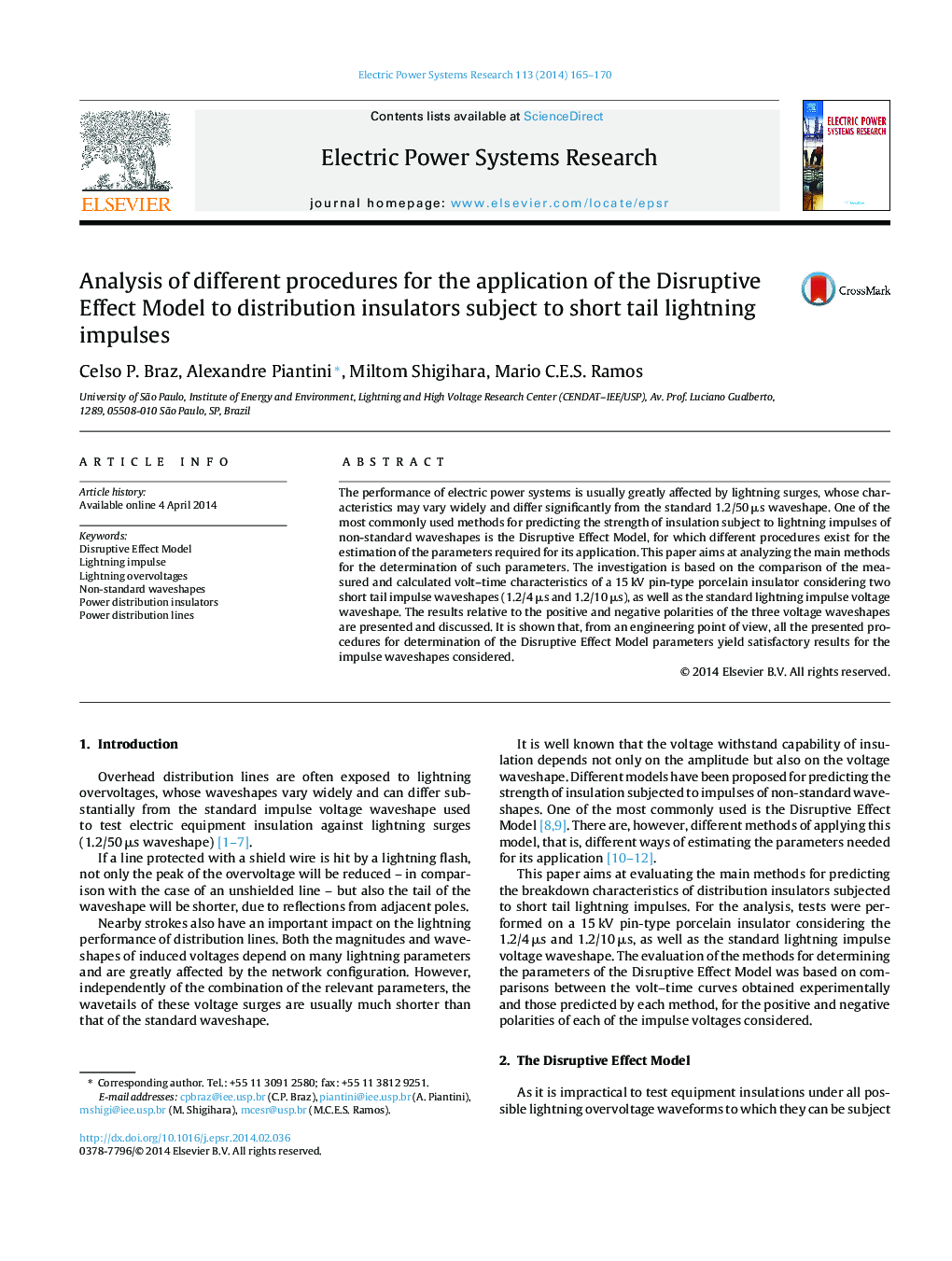| Article ID | Journal | Published Year | Pages | File Type |
|---|---|---|---|---|
| 703560 | Electric Power Systems Research | 2014 | 6 Pages |
•Volt–time curves of a typical 15 kV pin-type porcelain insulator obtained for three lightning impulse voltage waveshapes of positive and negative polarities.•Comparisons between the volt–time curves obtained experimentally and those predicted by the main methods for determining the parameters of the Disruptive Effect Model.•Comparative analysis of the main methods for determining the parameters of the Disruptive Effect Model.
The performance of electric power systems is usually greatly affected by lightning surges, whose characteristics may vary widely and differ significantly from the standard 1.2/50 μs waveshape. One of the most commonly used methods for predicting the strength of insulation subject to lightning impulses of non-standard waveshapes is the Disruptive Effect Model, for which different procedures exist for the estimation of the parameters required for its application. This paper aims at analyzing the main methods for the determination of such parameters. The investigation is based on the comparison of the measured and calculated volt–time characteristics of a 15 kV pin-type porcelain insulator considering two short tail impulse waveshapes (1.2/4 μs and 1.2/10 μs), as well as the standard lightning impulse voltage waveshape. The results relative to the positive and negative polarities of the three voltage waveshapes are presented and discussed. It is shown that, from an engineering point of view, all the presented procedures for determination of the Disruptive Effect Model parameters yield satisfactory results for the impulse waveshapes considered.
